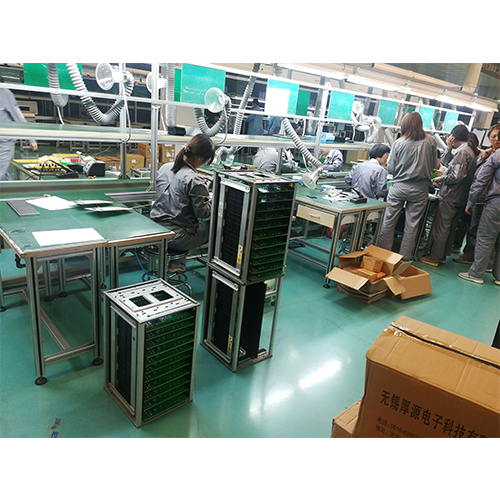ZM6152 Heat Exchangers in the Refrigeration Circuit educational equipment Compressor Trainer Equipment
Typical heat exchangers from refrigeration1
* Different media: air / refrigerant,refrigerant / refrigerant and water / refrigerant1
* Effect of superheating and supercooling of the
refrigerant on the cyclic process
Technical Description
Heat exchangers are an elementary part of refrigeration systems.
During cooling they are used to absorb the energy of the refrigerant by evaporation. During heating they discharge the energy set free during the condensation of the refrigerant. They are also used for internal energy transfer during superheating or supercooling of the refrigerant.
Dependent on the media, a difference is made between air / refrigerant, water / refrigerant and refrigerant / refrigerant heat exchangers.
Dependent on the constructive design, a difference is also made between coaxial, finned tube, plate or shell & tube heat exchangers.
The refrigeration circuit of the trainer includes as evaporator an air cooling finned tube heat exchanger and a water-heated plate heat exchanger, as superheater a tubular heat exchanger, and as condenser a water-cooled coaxial coil heat exchanger. These heat exchangers are the ones used most commonly in refrigeration and fulfil different functions dependent on the system type. A finned tube heat exchanger can e.g. also be used as a condenser.
The components are arranged clearly at the front. By measuring the
mass flow rates and the inlet and outlet temperatures the transferred
energy fluxes can be determined.
The well-structured instructional material sets out the fundamentals and
provides a step-by-step guide through the experiments.
Learning Objectives / Experiments
- different heat exchangers and their use in refrigeration
* coaxial coil heat exchanger
* finned tube heat exchanger
* tubular heat exchanger
* plate heat exchanger
- find out the correct installation position
- determine energy fluxes
- effect of superheating and supercooling of the
refrigerant on the cyclic process
- design of a compression refrigeration system
- representation of the cyclic process in the log p-h diagram

Specification
[1] refrigeration system with 4 different heat
exchangers: coaxial coil heat exchanger, finned tube
heat exchanger, tubular heat exchanger, plate heat exchanger
[2] combinations of different media: water / refrigerant, refrigerant / refrigerant, air / refrigerant
[3] water circuit with tank and pump to cool the condenser and heat the evaporator
[4] superheater can be disabled via bypass
[5] flow meter and thermometer in the water circuit to determine the exchanged energy fluxes
[6] thermometers at all relevant points of the system
[7] refrigerant R134a, CFC-free
Technical Data
Compressor
- refrigeration capacity: 625W at -5/32°C
- power consumption: 358W at -10/32°C
Receiver: 1,3L
Measuring ranges
- pressure: -1...9bar / -1...24bar
- temperature: 12x -5...105°C, 1x 0...60°C
- flow rate: 1x 2...27L/h (R134a), 2x 20...250L/h
Dimensions and Weight
LxWxH: 1900x800x1900mm
Weight: approx. 255kg
Required for Operation
230V, 50Hz, 1 phase

Water connection, drain
Scope of Delivery
1 trainer
1 set of accessories
1 set of instructional material